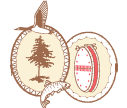Moose conservation in Eeyou Istchee and proposed Cree guidelines respecting the allowable harvest limit in Zone 17
Nemaska, Eeyou Istchee (October 7, 2022)
Following the alarming results of the moose aerial survey conducted in February 2021 through collaborative efforts between the Cree Nation Government, the Cree Nation of Waswanipi and the Ministère des Forêt, Faune et Parcs (MFFP) confirming the decline of the moose population, a number of efforts have been set forth to slow the decline and hopefully recover the population. Since September 2021, resolutions and actions have been adopted and implemented to help alleviate the decline, specifically in Zone 17.
A result of these efforts has been the closure of the moose sport hunt in Zone 17 for the 2022 hunting season regulated by Québec after a resolution was adopted by the Hunting, Fishing and Trapping Coordinating Committee (HFTCC) to set an Upper Limit of Kill of 104 as prescribed by the James Bay and Northern Quebec Agreement (JBNQA) in order to protect the Cree Guaranteed Level of Harvest (GLH) applicable in Zone 17.
In addition, a Moose Technical Committee has been formed earlier this year composed of members from the Cree Nation Government, Cree Trappers’ Association, Chiefs of Waswanipi, Ouje-Bougoumou, and Waskaganish as well as their representatives mandated to propose harvesting guidelines as part of a broader moose conservation plan. The Cree Trappers’ Association (CTA) has recently supported a series of proposed moose conservation guidelines at their Annual General Assembly. These guidelines have been developed in close collaboration with the communities, tallymen and land users and rely on our Cree customary practices and values reinforced through our Traditional Management system and governance. The objective of these guidelines is to protect our traditional way of life, protect moose habitat and its population, as well as gather knowledge and monitor activities and impacts which may influence the population within Eeyou Istchee. The guidelines also propose a series of measures to reduce harvesting pressures in Eeyou Istchee, more specifically Zone 17, so as to respect the allowable harvest limit of 104 set by the HFTCC.
The Cree First Nation of Waswanipi has already taken the initiative by recently adopting and implementing the first series of guidelines to reduce the harvesting pressure in Zone 17. These guidelines will be in effect for a period of 2 years after which they will be reviewed annually.
The guidelines are currently being presented at local assemblies in Ouje-Bougoumou and Waskaganish and will be presented to other communities in the coming weeks.
Efforts from all members to ensure a sustainable harvest during this time will help bring the moose population back to a healthy level while ensuring the respect of our collective interests and concerns, and most importantly, the conservation of the moose, a species intricately woven into the fabric of our traditional activities and cultural values.
For More Information
Contact: Flora Weistche,
Political Attachée
(514) 604-3276


